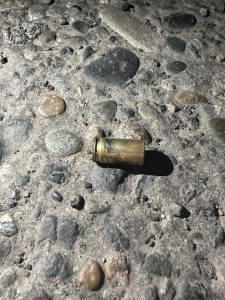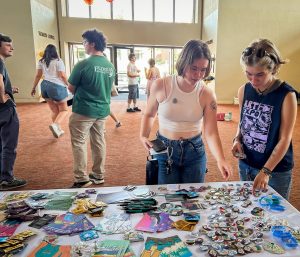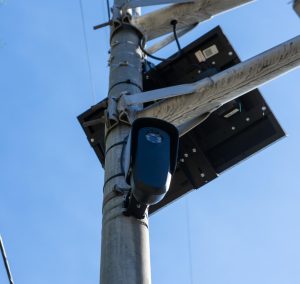OP-ED: What Does Divestment Really Mean for Whitman?
February 28, 2019
When the Whitman Board of Trustees voted to divest the college from all fossil-fuel investments, I happened to be in the room. As the student representative to the Board this year, it is my job sit at the table and help bring student perspectives to bear on long-term decisions at the college.
But in this case, I simply sat and watched it happen. After six years of conversations, debates, and protests involving students, faculty, staff, alumni, the administration, and, of course, the Board, the decision had been made: Whitman College was going to divest.
In the applause after the vote, it seemed that everything was settled. But what popped into my head were questions: What does divestment really mean for Whitman? How, after six years, did we arrive at a unanimous decision? And: What happens now?
I only have some answers, but I’ll add them to the conversation.
My understanding of divestment—and what it really is—comes from what I’ve gleaned about how the endowment functions.
Whitman invests in funds that are run by independent money managers with large portfolios. When an institution like Whitman invests, we add just a drop to the bucket and have no real input into investing decisions. After an investment matures, the college can reinvest or take its money elsewhere.
Within this system, divestment is different than what I had originally thought it was. It’s not about selling stock in fossil-fuel companies; it’s about avoiding funds that make the independent decision to invest or not invest in carbon polluters.
Under the new divestment policy, the college will not invest in funds that own any stock in the Carbon Underground 200, the list of two hundred companies worldwide with the most fossil-fuel reserves. This is the most widely recognized benchmark for “divestment.” If the college currently holds an investment in a fund exposed to the Carbon Underground 200, the investment will be allowed to mature but will not be renewed. In this way, the endowment will incrementally shift until it is fully divested.
Understanding this policy can help to explain why the divestment decision took years to make. There are funds whose managers choose not to invest in fossil fuel companies, including a variety of socially responsible investing (SRI) funds, but there are many funds that have 2%, 1%, or less than 1% invested in the Carbon Underground 200. Whitman can no longer invest in these funds, no matter what the fund’s whole portfolio looks like. The truth is that divestment severely limits the college’s fiscal strategy.
Economic studies confirm that divestment exerts little to no financial pressure on fossil-fuel companies in the global market. In light of this fact, it is understandable how divestment could be difficult for an institution like Whitman to adopt.
In order to make this commitment, the college needed to weigh its core fiduciary obligations against the symbolic value of divestment from incredibly destructive fossil fuels, and take the time to develop and come to a consensus on a plan that addressed both. I believe that this decision could have come sooner and had even greater impact, but it is still a crucial success.
It is important to recognize the work of particular groups and individuals who moved this decision forward. Divest Whitman, the student-run organization that has advocated for divestment since 2011, is a key player. They have staged protests and sit-ins, met regularly with administration leaders, and have proposed three times for divestment. I admire their organization, creativity, and persistence. It would also be remiss to not mention to work of Board of Trustees chair Nancy Serrurier and the Investment Committee chair Janice Abraham, who coordinated the development of the divestment policy, as well as the rest of the Board, who ensured that it could be executed properly. In addition, many students, staff, and faculty have supported the divestment effort in a variety of ways. They demonstrate that activism can bring about major positive change.
The question now (as it should always be) is: what’s next? Divestment was a significant step, but Whitman is filled with forward-thinkers. The issues of climate change and sustainability are more pressing than ever, and Whitman is situated to be an institutional leader.
The Board will need to continue to monitor the progress of divestment. That’s a start. There is no formal timeline on Whitman’s divestment process so that the college won’t be forced to make imprudent financial decisions. But divestment is the goal; it needs to get done.
As critical liberal arts students, staff, and faculty, we also should ask whether this is the right kind of divestment. Is the Carbon Underground 200 the definitive list of fossil-fuel polluters? Absolutely not. Is it enough? That’s a tough question, and one that forces us to recognize the obligations that our institution has towards fiscal stability as well as our planet.
In terms of investment, we might also take our cue from Michael Posner, who in a 2015 New York Times Sunday Review suggested that colleges focus on “sustainable investment campaigns,” rather than divestment (italics mine).
Divestment is key, but he’s right when he says, “universities need to move from defensive—fending off divestment campaigns—to a more affirmative approach, exploring how to generate solid financial returns while rewarding long-term, sustainable business practices.”
The Whitman endowment is 600 million dollars. Think of the impact our college could have, investing in what we believe to be right in addition to avoiding what we believe to be wrong. The Investment Committee has already incorporated sustainability into its decision-making process, but how could we step up this commitment?
Beyond investing, there are ways in which Whitman can renew its pledge to sustainability. From waste to composting to energy consumption, issues of our planet’s environment are not far away—they’re on our campus. How can our college be truly “sustainable,” and what does that word mean? How much sacrifice does genuine sustainability require? Can our society remain largely the same, or must it undergo fundamental restructuring in order to meet the challenge of coexisting with other life on Earth?
In the months following the divestment decision, I have been able to answer some of my questions. But even more, deeper questions have surfaced.
It’s a good thing that we are where we are, being trained to ask and answer difficult questions. Committing to divestment is excellent. I’m excited what the people of Whitman can do next.






